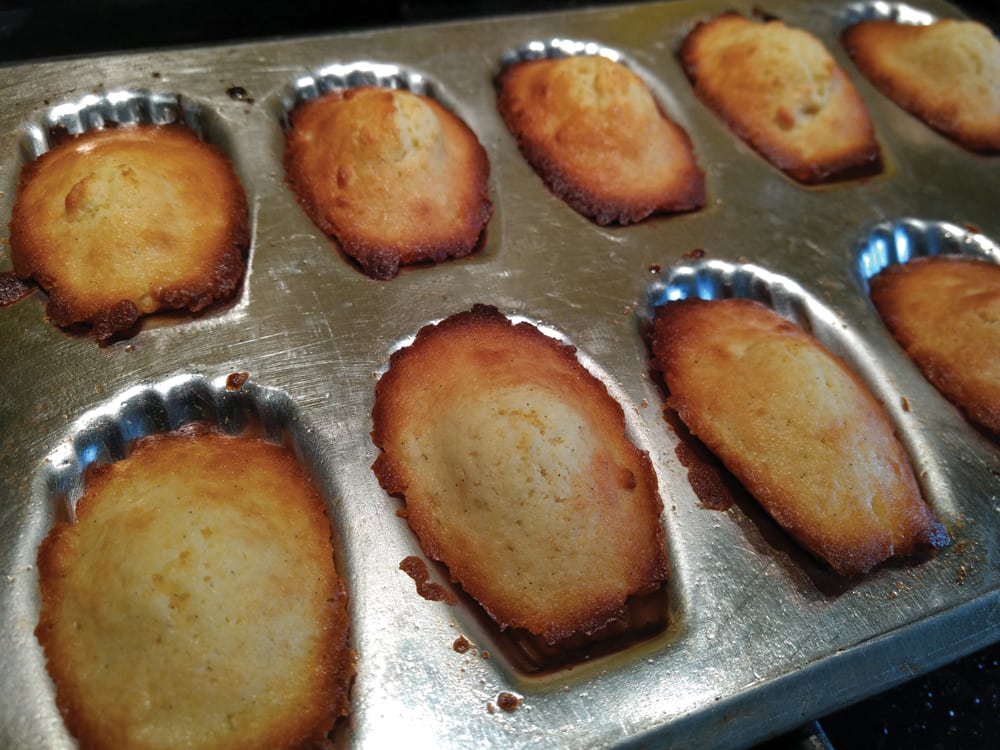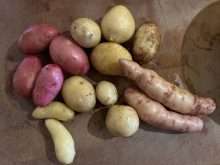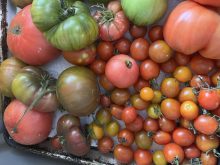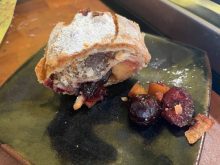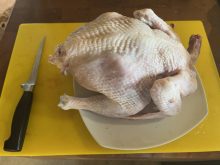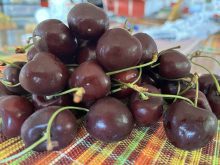On a Friday over lunch after our weekly trip to the farmers’ market, I asked Mom what her favourite desserts were. Her 82nd birthday was rolling around soon. I’d already decided on the main course — cioppino, Mom’s favourite fish dish. It’s a tomato-broth-based, Italian-derived fisherman’s stew that’s been part of our family’s repertoire since the mid-’60s, when, Lila, Mom’s sister, moved to the San Francisco Bay area. (Simple, simple. Make a big potful of a herb-scented tomato sauce rich with garlic, leeks and onion. Add a variety of sliced or diced fish and shellfish to the hot broth. Frozen fish is fine. Don’t overcook anything. Serve with crusty bread to mop; and napkins.)
Read Also

Gentle treatments for pain in the neck
Heading toward year-end, people unknowingly tense up against the cold and busyness, causing neck pain that can often be treated with appropriate support and gentle mobility, athletic therapist Kathlyn Hossack says.
“Cupcakes and berries with whipped cream,” Mom said in response, “or black forest cake,” (which is chocolate cake with cherries and whipped cream). A theme had emerged. I went home and rummaged my recipe file. I decided on a trio, so everyone could have a choice (and more than one!): vanilla madeleines; red velvet cupcakes, devil’s food cupcakes.
Madeleines are made with a sponge cake batter. They are baked in dainty scalloped indentations, a shape meant to honour pilgrims, in a pan called a plaque. Well, pilgrims; that’s all of us, travelling through life. Muffin pans look plainer but work just fine if you don’t have the fancy scalloped pan.
When I was a little kid, Mom had shown me how to measure and sift, how to cream butter and sugar, how to shape cookies. Later, she taught me to start spuds in cold water and green vegetables in boiling, how to roast a piece of beef, how to fry an egg. She had no time or patience for anything fussy, but she did know the mechanics, if not the science, of cooking.
At the time, home cooking was still the norm. It should still be. I believe we owe it to ourselves to be able to feed ourselves. And we owe our kids the knowledge of how to feed themselves. It’s like swimming — a necessary life skill. But it’s more than that; cooking gives me control over what I ingest. It’s the simplest and most effective form of control over our diets we have.
Another of the great things about being a good cook is that I can feed myself and my best beloveds. And I don’t mean just knocking off batches of homemade granola for breakfast or tuna salad sandwiches for lunch. Not that there’s anything wrong with either of those things — in fact, they are both staples in our home. But I mean stuff I really want to make and eat — stuff I see in restaurants or online, and think, “Hey, let’s have that for supper!” (And usually at a fraction of the cost, and without the hassle of driving to town.) You may find cupcakes — or madeleines — at the local bakery or farmers’ market, but this is a simple dish made the better for being homemade. One of the greatest pleasures of cooking is observing someone I care about enjoy what I have created. And sharing the meal. So first we eat cake. Then we open the presents. Happy birthday, Mom.
Madeleines
This is made like a sponge cake batter. Chilling the buttered pan, then the batter-filled pan, ensures a higher rise, as does baking on a preheated baking sheet. Madeleines really are best the same day they are baked, best warm, in fact; so make and chill the batter in advance, but don’t bake them until after your main course is eaten.
- 2 tbsp. plus 1/2 c. melted salted butter
- 2 large eggs
- 1/2 c. sugar
- 1 tsp. vanilla extract 2/3 c. flour
- 1 tsp. baking powder
Brush a madeleine pan with half the 2 tbsp. butter. Chill and repeat. Chill. If you don’t have a madeleine pan (plaque), line a full-size muffin pan with parchment cups, or butter and chill a mini-muffin pan.
Beat the eggs, sugar and vanilla on high speed for 5 minutes. Sift the flour and baking powder. Thoroughly fold the dry ingredients and remaining butter into the egg foam. Use two spoons or a piping bag to fill the pan’s indentations with batter. Chill for an hour.
Place a baking sheet on the middle rack of the oven, then heat the oven to 425 C. Remove batter-filled pan from fridge and put the chilled pan on the hot baking sheet in the oven. Bake for 8 minutes (for 3-1/2-inch madeleines; briefer for 1-1/2 inch; about 8-15 minutes for cupcakes, depending on size).
After you take the pan from the oven, use a small knife to remove them from pan. Invert and serve warm. These are good with a glaze (icing sugar mixed with coffee; icing sugar and lemon or orange juice; icing sugar, vanilla extract and water) or with whipped cream and fruit compote. Do as the French novelist Marcel Proust and dip them in tea the morning after.
Makes 12 3-1/2-inch madeleines.

